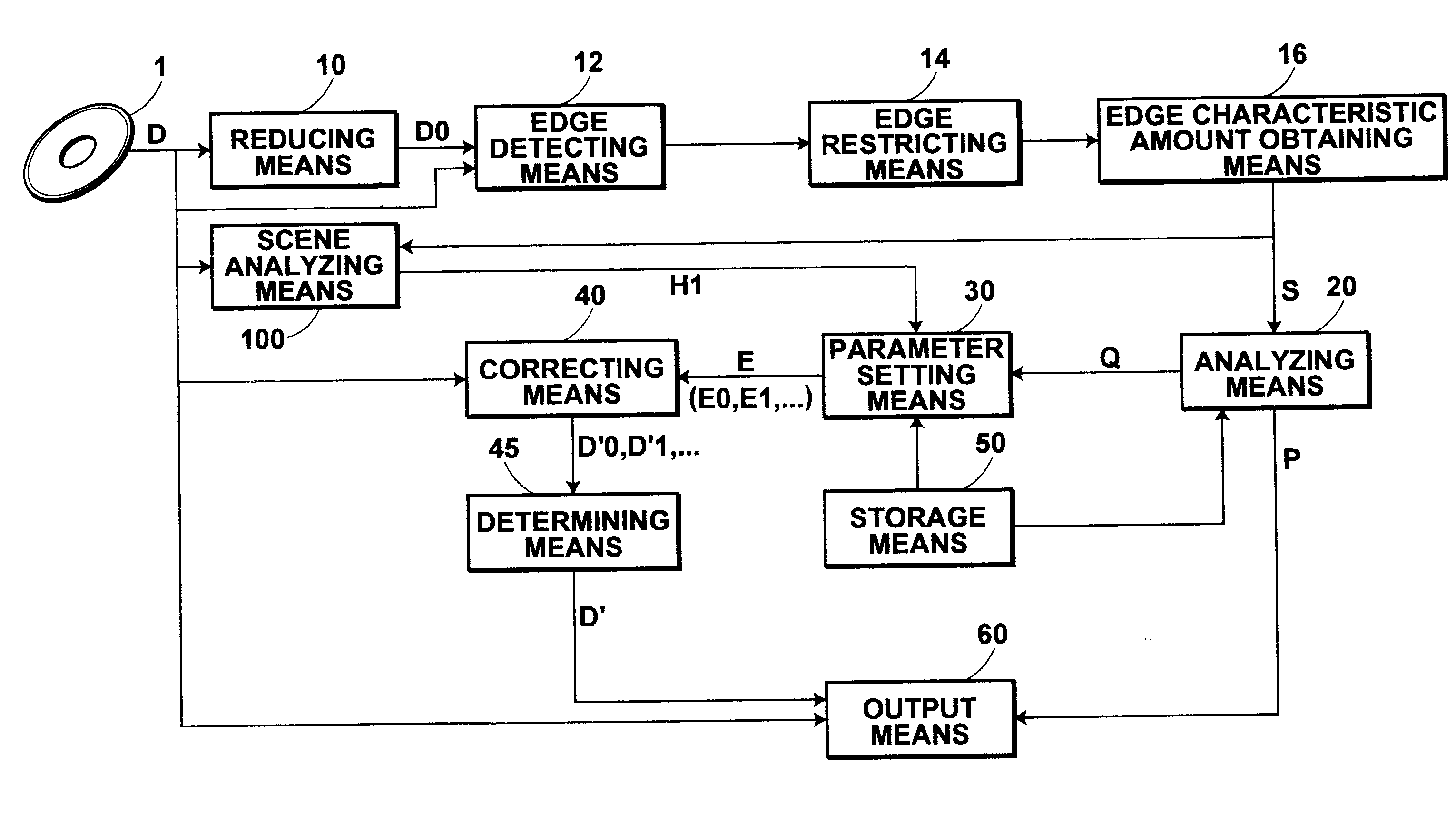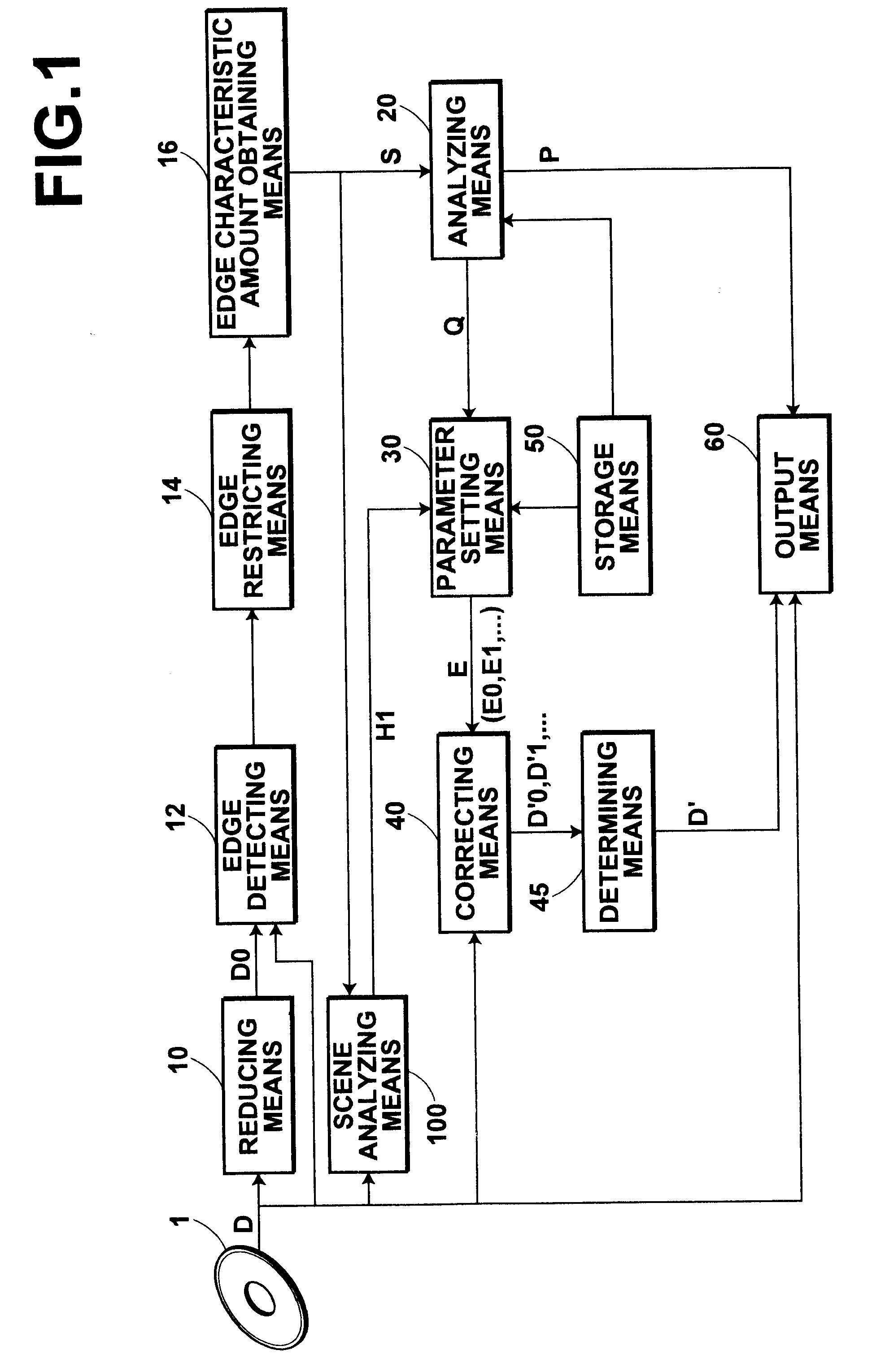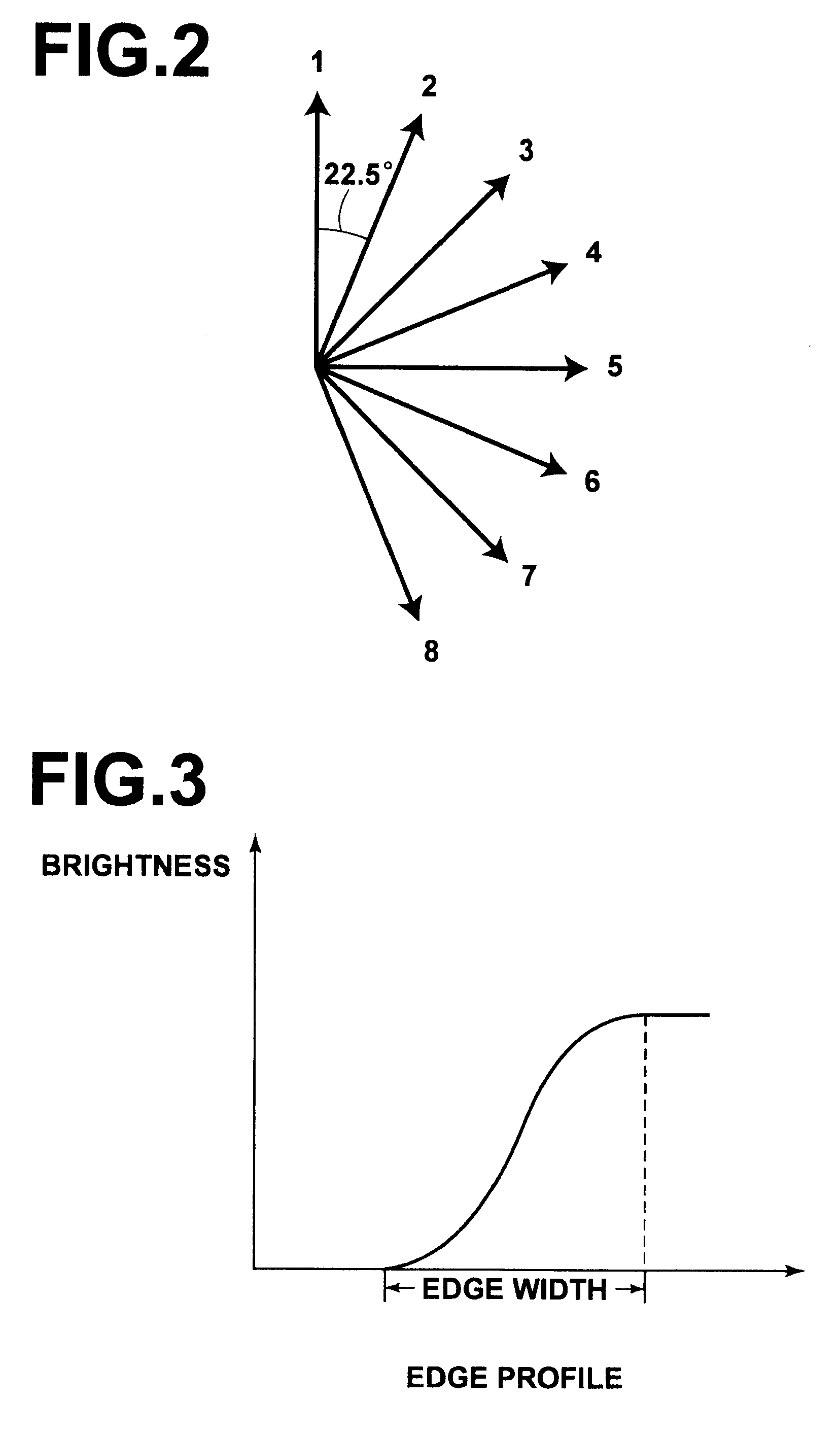Method, apparatus and program for image processing
a technology of image processing and program, applied in the field of image processing, can solve the problems of slow shutter speed, difficult to hold the camera firmly, out of focus camera, etc., and achieve the effects of improving the accuracy of blur discrimination
- Summary
- Abstract
- Description
- Claims
- Application Information
AI Technical Summary
Benefits of technology
Problems solved by technology
Method used
Image
Examples
first embodiment
[0261]FIG. 1 is a block diagram of an image processing system according to the present invention. The image processing system shown in FIG. 1 is a system for implementing the image processing by reading out photograph images (images) from a recording medium 1 that contains images obtained by auxiliary digital cameras of mobile phones (mobile cameras). The recording medium 1 contains groups of images, each comprising a number of images. Here, the description will be made taking a single image D as an example.
[0262]As shown in the drawing, the image processing system according to the present embodiment comprises: a reducing means 10 for reducing the image D read out from the recording medium 1 to obtain a reduced image D0 of the image D; an edge detecting means 12 for detecting edges in each direction of 8 directions shown in FIG. 2 using the image D and reduced image D0; an edge restricting means 14 for eliminating invalid edges from among those detected by the edge detecting means 1...
second embodiment
[0347]FIG. 19 is a block diagram illustrating the configuration of an image processing system according to the present invention. The configuration of the image processing system according to the present embodiment is similar to that of the image processing system according to the embodiment shown in FIG. 1, and components identical to those used in the embodiment shown in FIG. 1 are given the same numerals. The image processing system of the present invention differs from that of the embodiment shown in FIG. 1 only in the determining means which is given a reference numeral of 45′ instead of 45. Hence, the description will be made only for the determining means 45′.
[0348]The determining means 45′ of the image processing system according to the embodiment shown in FIG. 19 comprises an evaluating means (not shown) for evaluating the correction effect for each of the corrected images obtained by the correcting means 40. It determines one of the corrected images having the best correct...
third embodiment
[0371]FIG. 21 is a block diagram illustrating the configuration of an image processing system A according to the present invention. The image processing system A shown in FIG. 21 is adapted to implement image processing by reading out the photograph images (images) from a recording medium 1 storing images obtained by digital cameras. The recording medium 1 contains groups of images, each comprising a number of images. Here, the description will be made taking up a single image D as an example.
[0372]As shown in FIG. 21, the image processing system A of the present embodiment comprises: a condition setting means 300a for setting edge detecting conditions and discriminating conditions, and transmitting them respectively to an edge detecting means 212a and analyzing means, to be described later; a reducing means 210a for reducing the image D read out from the recording medium 1 to obtain a reduced image D0 of the image D; an edge detecting means 212a for detecting edges in each directio...
PUM
 Login to View More
Login to View More Abstract
Description
Claims
Application Information
 Login to View More
Login to View More - R&D
- Intellectual Property
- Life Sciences
- Materials
- Tech Scout
- Unparalleled Data Quality
- Higher Quality Content
- 60% Fewer Hallucinations
Browse by: Latest US Patents, China's latest patents, Technical Efficacy Thesaurus, Application Domain, Technology Topic, Popular Technical Reports.
© 2025 PatSnap. All rights reserved.Legal|Privacy policy|Modern Slavery Act Transparency Statement|Sitemap|About US| Contact US: help@patsnap.com



